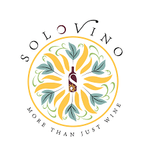Recently i was asked to what extent there are sulphites in wine and if any wine could be truly sulphite free. Naturally, the exact numbers of MG/L of SO2 didnt quite come to mind so i thought to refresh my my notes....
sulphites are indeed a natural byproduct of the wine production process. They occur naturally in small amounts in grapes and are also produced by yeast during fermentation, which converts grape sugars into alcohol. This natural production of sulphites in the wine is typically quite low and often insufficient to stabilize and preserve the wine effectively
So, because of this, winemakers often add additional sulphites (usually in the form of sulfur dioxide, SO2) during various stages of winemaking. These added sulphitesact as antioxidants, preventing unwanted oxidation that would spoil the wine, serve as antimicrobial agents, inhibiting the growth of bacteria and wild yeasts that can cause spoilage and help maintain the freshness, flavor, and stability of the wine through fermentation, aging, bottling, and storage.
In summary, sulphites are both naturally occurring and frequently supplemented by winemakers to ensure wine quality and longevity.
Ultimately no wine is truly "sulfite-free" because natural fermentation always produces some sulphites.
Further to this i wanted to check the legal limits say in countries like the USA..n the USA, for a wine to be labeled as "sulfite free" or "no sulfites added," it must contain less than 10 milligrams per liter (mg/L) of total sulfur dioxide (sulfites). Labels are not required to declare sulfites if the level is below 10 mg/L. Wine that contains more than 10 mg/L must carry a "Contains Sulfites" label for consumer information and regulatory compliance
| Sulfite Source | Typical Level (mg/L or ppm) | Notes |
|---|---|---|
| Natural Fermentation | 5 to 40 | Produced by yeast during fermentation |
| Added Sulfites | 50 to 200 | Added by winemakers to preserve and stabilize |
| Total Sulfites | 50 to 350 | Sum of natural + added sulfites |
I also went through all the SOLOVINO Wines - www.solovino.biz to check what was our lowest sulphite wines to date (tests results of wine obtained from Vinilab,Sinergo and LBBO in macon,france ...results were...interesting...
total sulphite value ...(refer to chart above) most natural being between 5-40 and heavily stabilized being closer to 350mg/l
CLINE CELLARS LIVE OAK ZINFANDEL (USA) - 0 MG/L
KROHN PORT LBV 2017(PORTUGAL) -16MG/L
RESTLESS RIVER MAIN ROAD AND DIGNITY CAB SAV (RSA) - 29 MG/L
PASQUIERS GRENACHE NOIR (FRA) - 32 MG/L
SOLDIERS BLOCK SHIRAZ (AUS) - 42 MG/L
STRANGE KOMPANJIE CINSAULT (RSA)- 50 MG/L
SHARPHAM DART VALLEY MADELINE ANGEVINE (UK)- 59MG/L
EMILIANA ORGANIC RESERVE ROSE (CHILE) - 64 MG/L
Made very interesting reading, particularly for those who have allergies to sulphites
As a general guideline there are some products which far exceed sulphite content than wine...especially dried apricots !
Summary Table:
| Food or Beverage | Typical Sulfite Level (mg/kg or mg/L) | Notes |
|---|---|---|
| Dried apricots | Up to ~2000 mg/kg | Much higher than wine |
| Dried golden raisins | Similar to dried apricots | High sulfites for preservation |
| Prunes | Very high sulfite levels | Food additive sulfites |
| Molasses | High | Food additive sulfites |
| Sauerkraut | High | Fermented food with added sulfites |
| Lemon/Lime juice | High | Often added as preservative |
| Gravies, sauces | Moderate to high | Can exceed wine sulfite content |
| White wine | Up to ~200 mg/L | Among alcoholic beverages |
| Red wine | Up to ~150 mg/L | Lower due to natural tannins |

